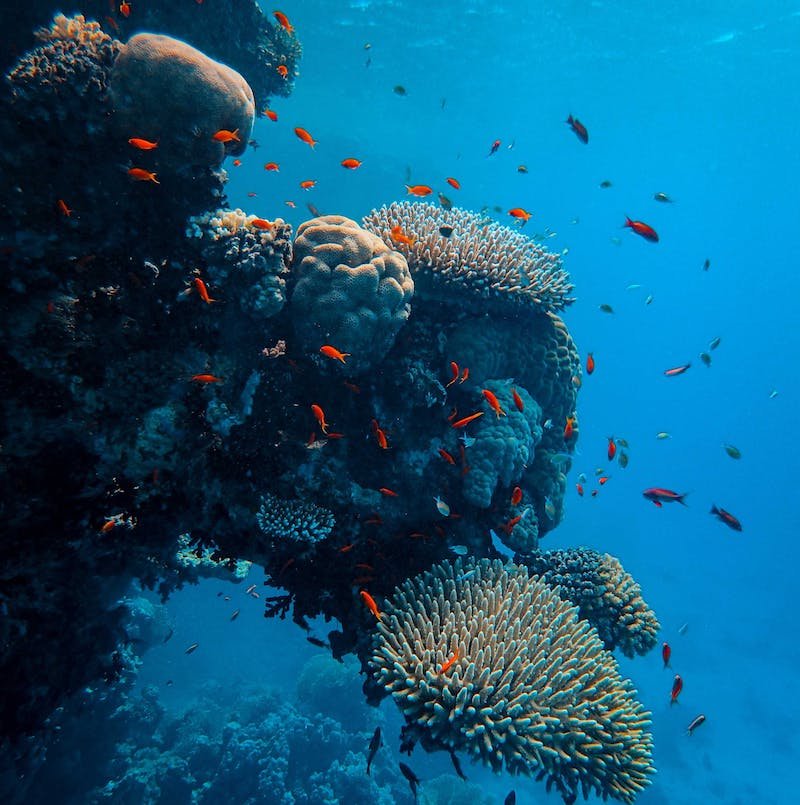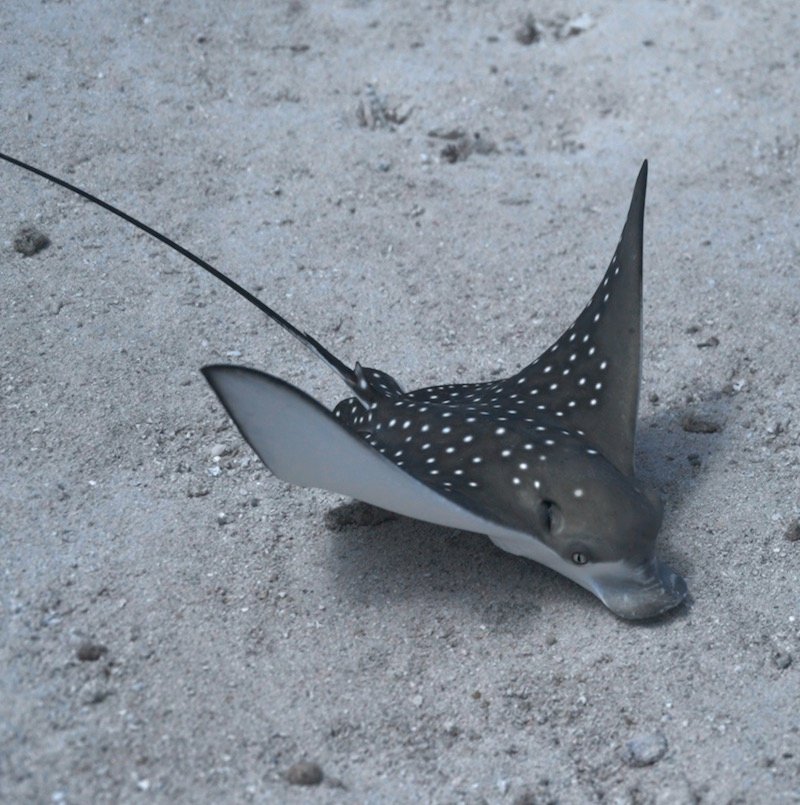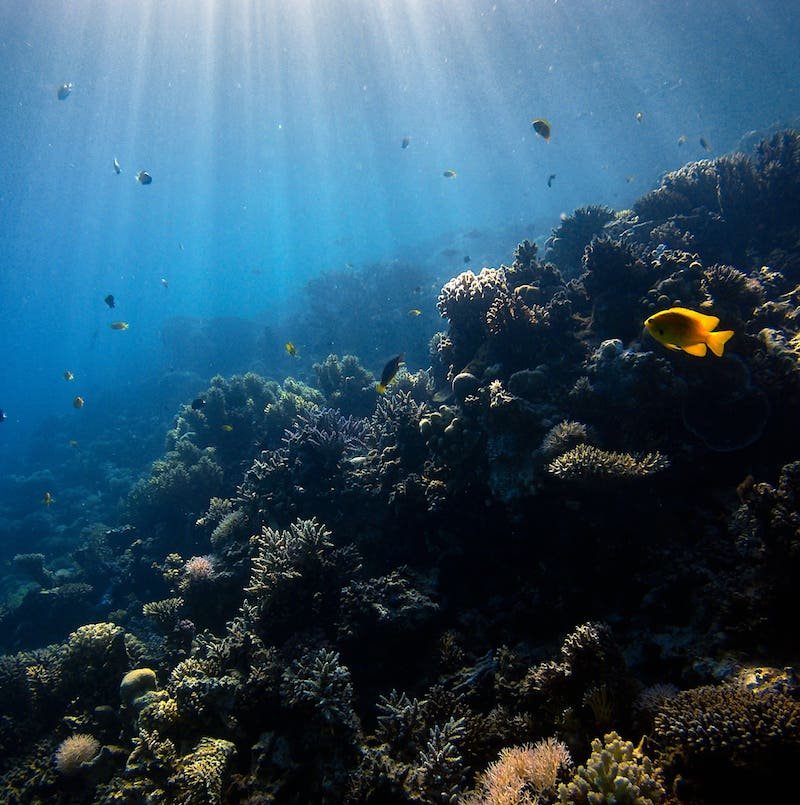Dives Sites
Madivaru corner
Probably one of the best dive sites in the whole of Maldives. This dive spot never fails to leave people with the biggest grin on their faces! Why? Once you reach what we call the bridge (which is the top of the reef facing the blue) you’ll be able to see dozens of breath-taking sharks! Between grey reef sharks, silver tips, black tips and white tips, they all regroup here to swim together against the current, all you need to do is hook yourself tight and enjoy the show!
Apart from the sharks, you’ll be able to swim along groups of mesmerising eagle rays, napoleon fish, turtles, tunas… and many other creatures! If there is one dive not to miss, it is this one!


Madivaru corner
Probably one of the best dive sites in the whole of Maldives. This dive spot never fails to leave people with the biggest grin on their faces! Why? Once you reach what we call the bridge (which is the top of the reef facing the blue) you’ll be able to see dozens of breath-taking sharks! Between grey reef sharks, silver tips, black tips and white tips, they all regroup here to swim together against the current, all you need to do is hook yourself tight and enjoy the show!
Apart from the sharks, you’ll be able to swim along groups of mesmerising eagle rays, napoleon fish, turtles, tunas… and many other creatures! If there is one dive not to miss, it is this one!
Three Palms
A beautiful reef just in front of Kuramathi resort. This reef regroups 3 different kinds of coral giving it its name and is perfect for divers interested in macro life, as you can find different types of nudibranchs, coral crabs, flatworms… But also for divers enjoying bigger life, such as eagle rays, sharks, all types of fish and sometimes even dolphins! These dives are quite relaxing, as the current can go one of two ways; left side of the wall of right side, meaning you simply have to drift along the wall during your dive.

Three Palms
A beautiful reef just in front of Kuramathi resort. This reef regroups 3 different kinds of coral giving it its name and is perfect for divers interested in macro life, as you can find different types of nudibranchs, coral crabs, flatworms… But also for divers enjoying bigger life, such as eagle rays, sharks, all types of fish and sometimes even dolphins! These dives are quite relaxing, as the current can go one of two ways; left side of the wall of right side, meaning you simply have to drift along the wall during your dive.
Manta point
The name says it all, this dive spot is the manta’s cleaning station. Mantas will often choose a specific big rock where they will come and let small species of fish « clean » them, meaning allowing the fish to feed on the bacterias from the manta’s skin. A few mantas will regroup together around that block for a while, allowing the divers to simply position themselves around and observe these majestic creatures swim around. Mantas will also often pass really close above the divers as they seem to really enjoy the accumulation of bubbles made by the divers.


Manta Point
The name says it all, this dive spot is the manta’s cleaning station. Mantas will often choose a specific big rock where they will come and let small species of fish « clean » them, meaning allowing the fish to feed on the bacterias from the manta’s skin. A few mantas will regroup together around that block for a while, allowing the divers to simply position themselves around and observe these majestic creatures swim around. Mantas will also often pass really close above the divers as they seem to really enjoy the accumulation of bubbles made by the divers.
Rasdhoo Channel
A great dive site for advance level divers with channel dive experience, because of the current flows in and out of the atoll and the depth ranging from 20m to 25m at top of the pinnacles dropping of to 30+m in to the blue. On a sandy bottom between Rasdhoo and Kuramathi all the pinnacles are already well colonized with different types of corals. On the sandy bottom look for stingrays, white-tip reef sharks. While crossing the channel almost anything is possible like grey reef sharks, eagle rays, manta, silver-tip reef sharks, or even hammerheads.

Rasdhoo Channel
A great dive site for advance level divers with channel dive experience, because of the current flows in and out of the atoll and the depth ranging from 20m to 25m at top of the pinnacles dropping of to 30+m in to the blue. On a sandy bottom between Rasdhoo and Kuramathi all the pinnacles are already well colonized with different types of corals. On the sandy bottom look for stingrays, white-tip reef sharks. While crossing the channel almost anything is possible like grey reef sharks, eagle rays, manta, silver-tip reef sharks, or even hammerheads.
Kuramathi Queen
A gorgeous 40m ship wreck sunk in 1987. This wreck is around 19meters deep and overflows with small life, from ?? shrimps, nudibranchs and crabs. It is possible to carefully roam inside the wreck, where a stingray often takes a nap… Because of its sheltered position inside the atoll, the dive site is also perfect for night dives… A very enjoyable and relaxed dive spot overall.


Kuramathi Queen
A gorgeous 40m ship wreck sunk in 1987. This wreck is around 19meters deep and overflows with small life, from ?? shrimps, nudibranchs and crabs. It is possible to carefully roam inside the wreck, where a stingray often takes a nap… Because of its sheltered position inside the atoll, the dive site is also perfect for night dives… A very enjoyable and relaxed dive spot overall.
Ori Faru
Ori Faru is a great dive site situated right in front of Kuramathi island. This is an easy wall dive and perfectly suitable for all levels of divers. The reef starts at about 4 meters and drops down below 40 meters depth.
While on top and inside the wall and reef you can spot octopus, lobsters, maldivian clown fish, moray eels and sometimes turtles, keep an eye in the blue for eagle rays and sharks.

Ori Faru
Ori Faru is a great dive site situated right in front of Kuramathi island. This is an easy wall dive and perfectly suitable for all levels of divers. The reef starts at about 4 meters and drops down below 40 meters depth.
While on top and inside the wall and reef you can spot octopus, lobsters, maldivian clown fish, moray eels and sometimes turtles, keep an eye in the blue for eagle rays and sharks.
Bodu Gaa
The name signifies Big Rock in Divehi. The ‘big rock’ is a coral block just 2 meters below the surface in front of Kuramathi resort. This reef offers many different fish species, octopus, eagle rays, and has an immense variety of small life hidden in different corals and anemones.


Bodu Gaa
The name signifies Big Rock in Divehi. The ‘big rock’ is a coral block just 2 meters below the surface in front of Kuramathi resort. This reef offers many different fish species, octopus, eagle rays…
Caves
These caves are located on the western end of the atoll past the Kuramathi Resort sandbank. There are many large overhangs here, but also two caves through which divers can swim (one at 18-20 meters, the other at 28-30 meters).
In the caves and overhangs, you may find white tips, stingrays, or nurse sharks. There is also a stunning table coral garden still untouched and healthy.

Caves
These caves are located on the western end of the atoll past the Kuramathi Resort sandbank. There are many large overhangs here, but also two caves through which divers can swim (one at 18-20 meters, the other at 28-30 meters).
In the caves and overhangs, you may find white tips, stingrays, or nurse sharks. There is also a stunning table coral garden still untouched and healthy.
North Channel
North Channel on the north/north-east side of Rasdhoo Atoll. The channel is relatively shallow and with average depth of 20 m is suitable for competent open water divers.
Mantas can be seen at several shallow cleaning stations in the channel. Outside of Manta Season this is a great spot for honeycomb moray eels, stingrays, lionfish, leaf fish, whitetips


North Channel
North Channel on the north/north-east side of Rasdhoo Atoll. The channel is relatively shallow and with average depth of 20 m is suitable for competent open water divers.
Mantas can be seen at several shallow cleaning stations in the channel. Outside of Manta Season this is a great spot for honeycomb moray eels, stingrays, lionfish, leaf fish, whitetips
Rasdhoo Beyru
Rasdhoo is an interesting site with the wall of the island of Rasdhoo on one side and massive coral blocks (or thilas) mounted on the outside steep drop-off of the atoll. These two features create a corridor of sand between the inner reef and outer thilas. In some places, the corridor is only 20 meters wide.
The thilas provide encounters with hunting jacks and trevally, white-tip and grey reef sharks, eagle rays, and occasionally manta rays.

Rasdhoo Beyru
Rasdhoo is an interesting site with the wall of the island of Rasdhoo on one side and massive coral blocks (or thilas) mounted on the outside steep drop-off of the atoll. These two features create a corridor of sand between the inner reef and outer thilas. In some places, the corridor is only 20 meters wide.
The thilas provide encounters with hunting jacks and trevally, white-tip and grey reef sharks, eagle rays, and occasionally manta rays.
Veligandu East
Only 20 minutes away from Rasdhoo, this reef slowly goes down to 30 meters. Big coral blocks can be found between 10 and 30 meters and many of them are full with glass fishes. Very friendly turtles, sometimes eagle rays, mobulas or white-tip reef sharks can be seen swimming along the reef. But don’t forget to look out for small life like nudibranches, scorpion fish or stonefish which can also inhabit these blocks. In the shallow part you will find lots of anemones with plenty of « nemos ».

Veligandu East
Only 20 minutes away from Rasdhoo, this reef slowly goes down to 30 meters. Big coral blocks can be found between 10 and 30 meters and many of them are full with glass fishes. Very friendly turtles, sometimes eagle rays, mobulas or white-tip reef sharks can be seen swimming along the reef. But don’t forget to look out for small life like nudibranches, scorpion fish or stonefish which can also inhabit these blocks. In the shallow part you will find lots of anemones with plenty of « nemos ».
